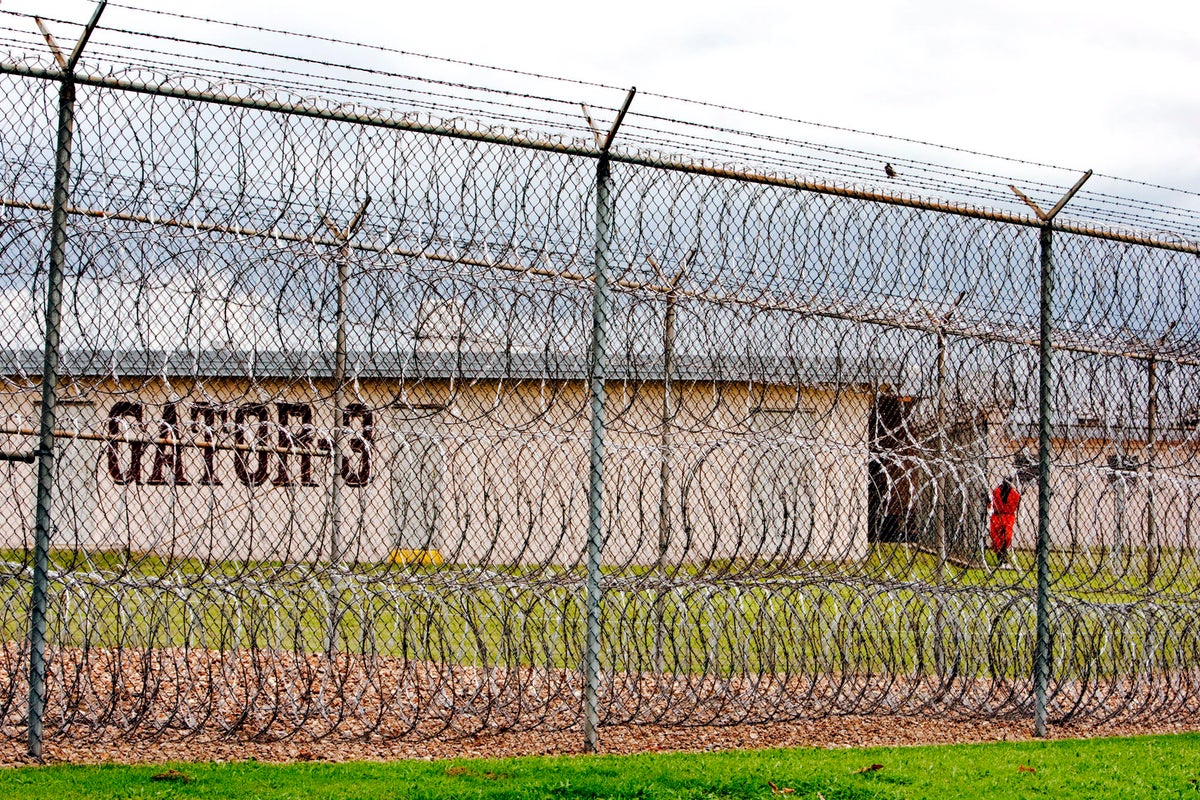
Eight incarcerated young people have been moved from troubled detention facilities across Louisiana to a former death row unit on the grounds of Louisiana State Penitentiary, the “first phase” of the state’s “youth transfer” process to the notorious prison known as Angola, among other facilities.
The West Feliciana Center for Youth at Angola – the site of a former plantation fuelled by slave labour that is now among the largest maximum security prisons in the US – stands near the gates to the sprawling prison complex.
Four children from the Acadiana Center for Youth at St Martinville and four others from Swanson Center for Youth at Monroe were transferred to the facility this week, according to the state’s Office of Juvenile Justice.
Ten other children were moved from Bridge City Center for Youth outside New Orleans to the Swanson Center.
No other state in the US houses children and young adults in the juvenile justice system on the grounds of an adult prison, let alone a facility with a reputation as one of the most dangerous in the nation.
The facility can hold up to 24 people, where they will sleep, eat, receive medical care and perform school work, according to The Advocate, which received a tour of the facility.
Fences topped with razor wire were wrapped in black fabric in an effort to keep the facility in compliance with federal policy prohibiting contact between incarcerated adults and children.
There is also a basketball hoop in an outdoor area, and signs with phrases like “keep trying” and “caring is thinking for your heart” are posted over markers that formerly identified the building as the prison’s old death row.
A row of televisions face the cell doors on each wing.
Civil rights attorneys, former justice officials and a federal district judge have criticised the move, which US District Judge Shelly Dick called “untenable” and likely to “cause psychological trauma and harm”.
“While locking children in cells at night at Angola is untenable, the threat of harm these youngsters present to themselves, and others, is intolerable,” Judge Dick wrote in last month’s ruling to approve the move. “The untenable must yield to the intolerable.”
The timing of the controversial move has also come under scrutiny, and it remains unclear when exactly the children were moved. State officials said they were brought to Angola on Tuesday morning, though the Office of Juvenile Justice later contradicted those statements, explaining that the children had been shuffled among facilities throughout the state this week.
The plan follows several high-profile incidents and acts of violence at the Bridge City facility, including a riot and four escapes, with one allegedly involving a carjacking and a man who was left in critical condition after being shot.
The new facility at Angola is intended to house some of the most troubled youth within the state’s juvenile system for only a few weeks at a time. Youth transfers are seen as a temporary solution until renovations are complete at the Jetson Center for Youth in Baker, Louisiana.
“This is not an ideal solution, but it is the best temporary solution we have available to us to keep our youth safe, to keep our staff safe, and to keep our communities safe after recent incidents,” a spokesperson for the Office of Juvenile Justice told The Appeal last month.
Louisiana has not had a track record of success in moving more troubled youth from one facility to another, according to the Louisiana Illuminator.
The state opened the facility in St Martinville following a riot at another facility. But an investigation from NBC News and ProPublica later uncovered abuse and neglect at the St Martinville site.
The Office of Juvenile Justice also was not providing legally-required schoolwork at the site and relied on round-the-clock solitary confinement as punishment.
One of the plaintiffs in a federal lawsuit to block the move said in court filings that he began tearing his hair out after learning he would be sent to Angola.
“Youth break down and shed tears because of the prospect of being moved to Angola,” the 17-year-old said.
The Louisiana Center for Children’s Rights said in a statement that the move “contradicts the evidence of [the Office of Juvenile Justice’s] inability to provide proper care and supervision to youth in its own facilities, upholding the myth that all we need to achieve safety is a stronger cage.”
“Moving children into the Angola facility will not solve the problems that [the Office of Juvenile Justice] has been facing,” the group added. “It will only ensure the past repeats itself: children will be held in solitary confinement, met with excessive use of force, and they will be denied the education and services they are entitled to and that are needed to reduce re-offending once they are released.”
Louisiana has among the highest rates of youth incarceration in the US, according to 2019 data from the Annie E Casey Foundation.
Additional reporting by Josh Marcus







